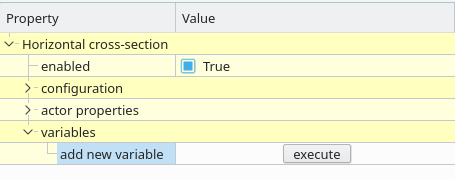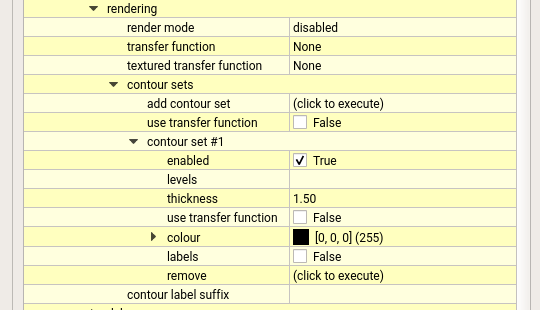

Horizontal cross-section actor, together with a transfer function.
The horizontal section actor draws a map of multiple forecast data fields at an arbitrary pressure altitude.
On clicking the execute, the list of variables available in the data loaded with the data pipeline is displayed and the user can choose the variable that needs to be added.


The user needs to repeat this step to multiple variables or even the same variable multiple times.Also, once a variable has been added, it has options so that it can be removed or changed.
It is possible to get some statistics about the data of a given variable.

Also, it is possible to export the data to an external file for debugging purposes.


Met.3D currently supports render modes consisting of filled contours, line contours,texture contours and their combinations. After choosing the render mode, the user needs to select an appropriate transfer function or texture function (which should have been already created). There are options to choose the various characteristics of the contour sets.
Met.3D provides options to smoothen the data.

Currently horizontal smoothing is possible using either distance based or grid cell based modes.
We recommend to use the smooth mode "horizontalBoxBlur_distance" with "symmetric" boundary conditions.

Met.3D supports ensemble visualization. Each variable by default is synchronized to temporal extents and ensemble size based on the data loaded using the data pipeline.By, turning off the ensemble synchronization, the user can choose the members and the ensemble mode. Currently individual member or ensemble mean, standard deviation, min, max, max-min, above or below a threshold are supported.